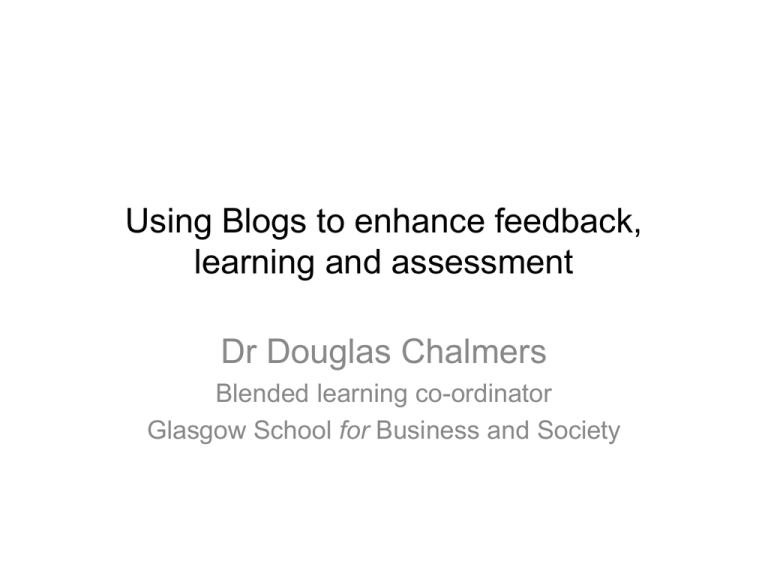Using Blogs and Wikis to enhance learning and assessment
advertisement

Using Blogs to enhance feedback, learning and assessment Dr Douglas Chalmers Blended learning co-ordinator Glasgow School for Business and Society An example of a current blog – Media Ethics •4th year undergraduate – Journalism and Media students •Compulsory for journalism (NCTJ accredited) •Optional for Media •Applies ethical approaches to decisions in the media Success with student involvement: Success with student involvement: •Class involvement 50% + for each scenario •Recursive involvement once different ethical frameworks introduced •An extension of the classroom •A living record of progress through the syllabus Using the Blogs for formative assessment •Set class task, and encourage maximum involvement in blog comments •Set aside one teaching slot to critique the comments •Comments are anonymised for this process •Prepare comments/ annotations beforehand using colour coding •Example: The journalistic case of Nick Martin Clarke (see word document) From a summative point of view: How to mark? • For best use, need interesting (!) topic – Without real involvement a dimension is missing • To become a real part of the module, the blogs need to be lively – ‘Dead’ blogs only attract zombies…… • Encourage involvement through: – Positive marking (i.e. rule out ‘negative’ marking) – Have period of formative assessment first – Use an approach marking the best 3, or 5 perhaps contributions? Setting assessment criteria • One approach – Marking through banding: • Undergraduate: E = 35% - 39% D = 40 – 49% C = 50 – 59% B = 60 – 69% A = 70%+ • Use (+ & -) ie B = 65; B+ = 67; B++ = 69 etc Setting Assessment Criteria 2 • Possible approaches: • Average out ‘best 5’ or best 3 contributions • Ask students to limit themselves to say 300 words (please) • Or: – 2 questions posed for summative assessment. Students requested to post contribution of max 500 on one, and a ‘critique’ of a colleagues posting in 500 words. (have used this for postgrad) Approach applied to other Programmes •International Events Management (PG) •Multimedia journalism (PG) Advantages • • • • Complementary to face to face learning Gauge of Student participation Tool for peer to peer collaboration Creates good revision aid for students Issues to be aware of • • • • Needs proper integration (no simple ‘add-on) Need to provide model of best-use to students Needs monitoring to ensure full involvement Not universally applicable to all modules everywhere











